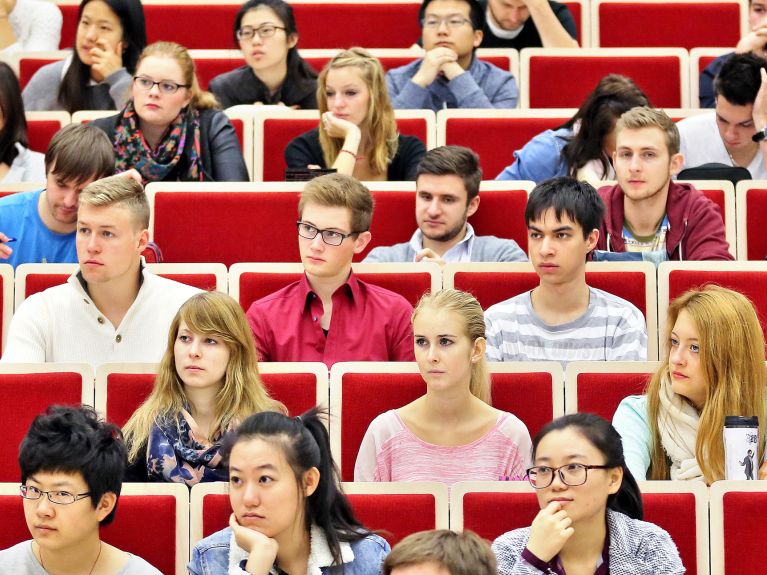Germany is attracting students and researchers
The number of international students at German universities has risen. Key facts from the report Wissenschaft weltoffen 2018.

Germany is an attractive destination for students and researchers from other countries. At the same time, the numbers of German students studying abroad has again reached a high level. These trends are illustrated by this year’s Wissenschaft weltoffen report presented by the Federal Ministry of Education and Research (BMBF) together with the German Academic Exchange Service (DAAD) and the German Centre for Higher Education Research and Science Studies (DZHW).
Germany is highly attractive as an international location for science and benefits from international exchange activities.
Almost 13 per cent international students in Germany
The number of international students at German universities rose by five per cent to 359,000 in 2017. That is 12.8 per cent of all students. This means that the projected goal for 2020 of 350,000 foreign students in Germany has already been achieved.
Federal Minister of Education and Research Anja Karliczek says: “Scientific freedom and our investments in the universities are paying off. Germany’s scientific and higher education system is internationally networked and cosmopolitan in the very best sense.”
Quick facts
The most students come to Germany from these countries
- China 34,997 (13.2 %)
- India 15,308 (5.8 %)
- Russia 11,295 (4.3 %)
- Austria 10,575 (4 %)
- Italy 8,550 (3.2 %)
- Cameroon 7,425 (2.8 %)
- France 7,335 (2.8 %)
- Iran 7,123 (2.7 %)
- Ukraine 7,000 (2.6 %)
- Turkey 6,953 (2.6 %)
Numbers of Germans studying in other countries
In comparison with previous years, the number of Germans studying abroad has remained stable at 137,700. Their favourite countries for studying are Austria, the Netherlands, Great Britain, Switzerland and the USA.
More international scientific personnel
Germany is also a very attractive destination for scientists. Since 2007 the number of foreign scientific personnel at German universities has risen by 84 per cent. In 2016 46,000 foreign scientists were employed at universities, with the majority in the faculties of mathematics and engineering sciences.
China leads as the country of origin for students completing a doctorate with a total of almost 800 PhDs. Amongst the major non-university scientific institutions the Max Planck Society has the largest proportion of foreign personnel totalling 45 per cent.
